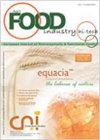Research of the Chemical Composition and Acute Toxicity of Wild Grasses Decoctions as a Prescription Component of Soft Drinks
Q Engineering
引用次数: 1
Abstract
Excessive formation of free radicals in the human body leads to the biologically active compounds destruction, jeopardizing well-being, causing decrease in immunity and leading to premature aging. Inter alia, the use of soft drinks containing antioxidants (flavonoids, phenolic compounds and other organic substances) can reduce the harmful oxidative process impact on the body. A man used medicinal sage (Salvia officinalis), peppermint (Mentha piperita L.), sand immortelle (Helichrysum arenarium L.) as sources of biologically active compounds during the study. The research aims at studying the chemical composition and acute toxicity of decoctions from a mixture of medicinal sage, peppermint, sand immortelle, recommended in the non–alcoholic beverages production. The authors prepared three decoctions, differing in the quantitative content of herbs mixture; then determined an antioxidant activity and quantitative content of biologically active compounds in herbal decoctions. They used liquid chromatography-mass spectrometry to identify the phenolic composition; the flavonoids content was determined on a spectrophotometer SF-46, the quantitative active substances content of plant raw materials - on a chromatograph “Cvet Yauza-04”. A man studied acute toxicity on CD-I outbred mice (males and females) by injecting the maximum permissible volume of herbal decoctions into the stomach through a probe – 0.8 ml per 29 g, which was a dose of 5.0 g/kg of animal weight. The study results demonstrated that herbal decoctions are safe / low-toxic for mice. According to the research results, decoctions from herbs mixture of medicinal sage, peppermint and sand immortelle can be recommended as a ready-made drink in the capacity of flavonoids, phenolic compounds and other organic substances.野生草煎液作为软饮料配方成分的化学成分及急性毒性研究
人体内自由基的过度形成会导致生物活性化合物的破坏,危害健康,导致免疫力下降,导致过早衰老。除其他外,使用含有抗氧化剂(类黄酮、酚类化合物和其他有机物质)的软饮料可以减少有害的氧化过程对身体的影响。一名男子在研究中使用药用鼠尾草(Salvia officinalis),薄荷(Mentha piperita L.),沙不朽草(Helichrysum arenarium L.)作为生物活性化合物的来源。本研究旨在研究在无酒精饮料生产中推荐使用的鼠尾草、薄荷、长白沙混合煎剂的化学成分和急性毒性。作者配制了三种煎剂,在混合药液的定量含量上存在差异;然后测定了中药煎剂的抗氧化活性和生物活性化合物的定量含量。他们用液相色谱-质谱法鉴定了酚类成分;用SF-46分光光度计测定黄酮类化合物含量,用Cvet Yauza-04色谱仪测定植物原料中活性物质含量。一个人对cd - 1型杂交小鼠(雄性和雌性)的急性毒性进行了研究,通过探针将最大允许体积的草药煎剂注射到胃中,每29克0.8毫升,剂量为5.0克/公斤动物体重。研究结果表明,中药煎剂对小鼠安全/低毒。根据研究结果,在黄酮类化合物、酚类化合物和其他有机物的含量方面,可以推荐鼠尾草、薄荷和永沙混合的煎剂作为现制饮料。
本文章由计算机程序翻译,如有差异,请以英文原文为准。
求助全文
约1分钟内获得全文
求助全文

 求助内容:
求助内容: 应助结果提醒方式:
应助结果提醒方式:


